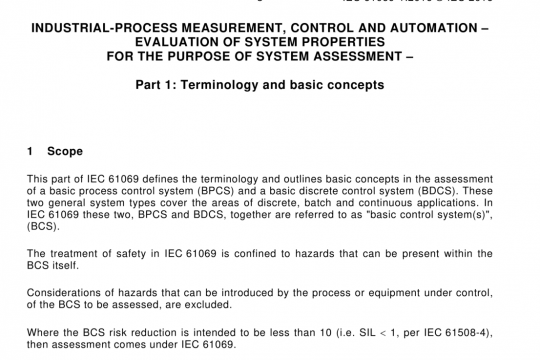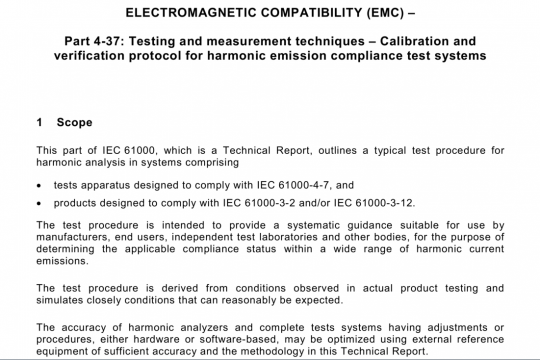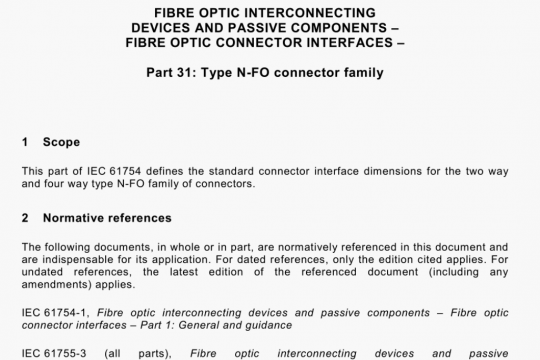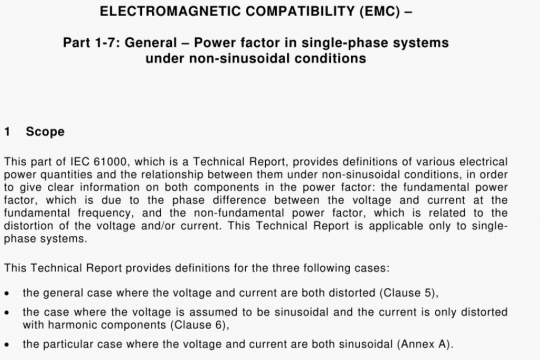IEC 62040-3 pdf free download
IEC 62040-3 pdf free download.Uninterruptible power systems (UPS) – Part 3: Method of specifying the performance and test requirements.
5.4 Energy storage device specification
5.4.1 General
5.4 specifies details that apply to a secondary battery, presently the most common technology utilised to provide energy storage for use during AC input power failure.
It is recognised that other technologies, for example flywheel energy storage systems, may replace the need for a battery system. Such technologies may be fully compatible with UPS characteristics primarily intended for batteries. With this in mind, subject to an agreement between the manufacturer/supplier and the purchaser and where applicable, 5.4 may be used to specify other energy storage technologies.
5.4.2 Battery
5.4.2.1 Requirements for all batteries
A battery intended to serve as an energy storage device for a UPS complying with this document shall comply with the IEC 62040-1 requirements for location, ventilation, marking and protection of a battery.
5.4.2.2 Characteristics to be declared by the manufacturer
The manufacturer shall declare the following battery characteristics, for example in the user manual or in the UPS technical data sheet (see Clause D.5):
a) service life;
b) quantity of blocks or cells and of paralleled strings if more than one string;
c) nominal string voltage;
d) battery technology (e.g. vented or valve-regulated lead-acid, NiCd, NiMH, Li-Ion);
e) nominal capacity of total battery and reference discharge rate, for example discharge rate do;
f) stored energy time at reference test load;
g) restored energy time;
h) ambient temperature at which battery performance is rated;
i) earth condition of DC port /isolation of DC port from input and/or output (only applicable for remote battery);
j) Battery ripple current during normal mode operation (if exceeding 5 % of the numerical Ah capacity [ClO discharge rate]).
When a remote battery is part of the UPS installation, and the remote battery cabling and/or protection is not provided by the manufacturer/supplier, the following additional characteristics shall be declared:
k) discharge current at nominal battery string voltage while in stored energy mode and supplying rated load;
l) DC fault current rating;
m) cable voltage drop recommendation;
n) protection requirements.
The manufacturer/supplier shall supply the following additional information if requested by the purchaser:
o) charging regime, for example constant voltage, constant current, boost or equalization capability, two-state charging;
p)craing voltage and tolerance band;
5.4.2.3 Characteristics and conditions to be identified by the purchaser The purchaser shall identify any requirements, characteristics and conditions that deviate or are more severe than those listed in 54.2.1 and 5.4.2.2. This includes any particular conditions required by national and local regulations and any adverse or special service conditions including when a battery is supplied by a third party. NOTE National and local regulations can specify a minimum stored energy time and define the type of energy storage device to be used.
5.5 UPS switch specification
5.5.1 UPS switches supplied as an integral part of a UPS UPS switches supplied as an integral part of a UPS are covered by the specified electrical service conditions and performance requirements in Clause 5 and need not to be specified separately.
5.5.2 UPS switches not supplied as an integral part ofa UPS Switches supplied separately and intended to operate in conjunction with the UPS shall be compatible with the applicable electrical service conditions and performance requirements of the UPS and shall comply with their own product performance standard.IEC 62040-3 pdf free download.




